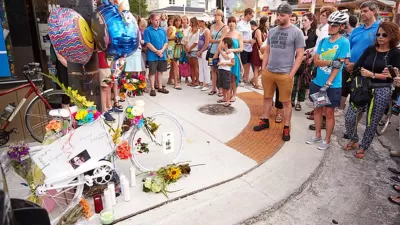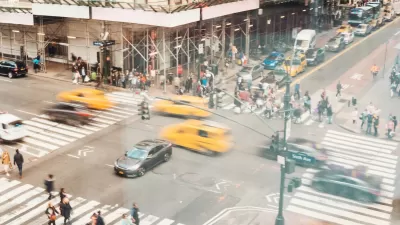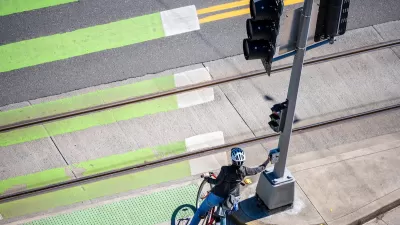To end traffic fatalities while still enabling urban mobility, cars will have to slow down and people will have to travel by other modes.

Antonio Loro writes an opinion piece on the subject of traffic safety and the inevitable backlash against efforts to achieve "Vision Zero" safety improvements.
It seems that some members of the public are more concerned that Vision Zero projects (like reducing vehicles lanes, adding traffic calming elements to the street, and improving bike infrastructure) will kill something more sacred than human life—the ability to quickly move from point a to point b in a car. Loro cites recent controversies over road diets on the Westside of Los Angeles as evidence of the willingness of some communities to sacrifice lives for the sake of mobility.
Loro's argument is just the opposite: that urban mobility must not sacrifice human lives. "To end road deaths, cities will have to tame unruly traffic, though it won’t be necessary to slow everything to a crawl; beyond that, more people will have to shift to modes of transport that, conveniently, are both safer than cars and provide more efficient ways to get around cities."
Loro details the kinds of measure that can slow down traffic, while pointing to the example of airline safety as an example of the kind of safety considerations that can be implemented for travel. Still, despite the many options for reconfiguring the street available to Vision Zero campaigns, people will still have to decide to travel by more efficient modes, like biking, walking, or riding public transit, if they want to improve traffic safety and improve congestion in the city.
FULL STORY: What’s the right number of people to kill on the roads? (Hint: it’s zero)

Planetizen Federal Action Tracker
A weekly monitor of how Trump’s orders and actions are impacting planners and planning in America.

Congressman Proposes Bill to Rename DC Metro “Trump Train”
The Make Autorail Great Again Act would withhold federal funding to the system until the Washington Metropolitan Area Transit Authority (WMATA), rebrands as the Washington Metropolitan Authority for Greater Access (WMAGA).

The Simple Legislative Tool Transforming Vacant Downtowns
In California, Michigan and Georgia, an easy win is bringing dollars — and delight — back to city centers.

The States Losing Rural Delivery Rooms at an Alarming Pace
In some states, as few as 9% of rural hospitals still deliver babies. As a result, rising pre-term births, no adequate pre-term care and "harrowing" close calls are a growing reality.

The Small South Asian Republic Going all in on EVs
Thanks to one simple policy change less than five years ago, 65% of new cars in this Himalayan country are now electric.

DC Backpedals on Bike Lane Protection, Swaps Barriers for Paint
Citing aesthetic concerns, the city is removing the concrete barriers and flexposts that once separated Arizona Avenue cyclists from motor vehicles.
Urban Design for Planners 1: Software Tools
This six-course series explores essential urban design concepts using open source software and equips planners with the tools they need to participate fully in the urban design process.
Planning for Universal Design
Learn the tools for implementing Universal Design in planning regulations.
Smith Gee Studio
City of Charlotte
City of Camden Redevelopment Agency
City of Astoria
Transportation Research & Education Center (TREC) at Portland State University
US High Speed Rail Association
City of Camden Redevelopment Agency
Municipality of Princeton (NJ)





























